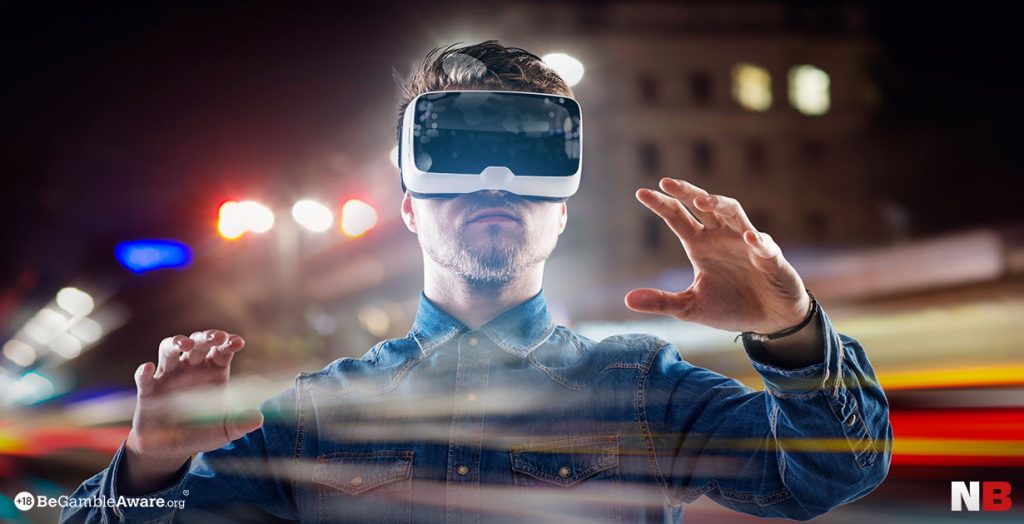
The phrase “Virtual Reality” is far older than you probably expect. Coined in 1938 by Antonin Artaud, he used the term “la réalité virtuelle” to describe the temporary and illusory nature of the theatre. Of course, Antonin certainly did not imagine strapping a box to one’s face in order to experience a computer-generated world. That honour belongs to author Damien Broderick, who used the term in his science fiction book “The Judas Mandala”. The first physical piece of VR equipment was a headset that was created in 1968 by Ivan Sutherland and Bob Sproull. The headset was so heavy, it needed to be suspended from the ceiling and was named ‘the Sword of Damocles’.
Now that we have smartphones, sophisticated processors and game quality graphics in a system small and thin enough to fit in your pocket, finding yourself in a VR environment is much easier. With the right equipment, you can just slot your phone into a headset and suddenly you are immersed in a virtual world. Of course, everyone is now in a rush to monetise this in any way possible, so it’s no great surprise to see that slot games are also part of that process.
Trailblazers
There are already a few VR slots out there. Gonzo’s Quest from NetEnt is already one of the most popular slot games available, thanks to its 3D graphics and entertaining characters. But now they have developed Gonzo’s Quest 3D. While the graphics are a bit more cartoonish in this version, the extra space that a 360 degree view gives you means that they can make a few changes. There is no need to hide the paytable from view, for example. Just turn your head, and there it is. You can also make more of the bonus rounds and gamble feature, making the whole experience that much bigger and more involved.
Treasures of the Ocean from High Roller Slots is another early VR game that really makes use of the extra space a 360 degree area has to offer. While playing the slot, there are fish and turtles floating around near you, as if you were in an underwater casino. Enter the bonus phase, and you are given various ocean locations to play in. You can bathe in the bioluminescent glow of an anemone cave, brush up against oceanic giants in the open sea, or descend into the darkness of the abyss. Treasure chests can be found falling from the surface or nestled under a coral reef.
Virtual Worlds
One of the original visions for VR was to create an online environment which multiple people could experience at the same time. Obviously for the gambling industry, an online casino that is just as busy and vibrant as a real casino would be the goal, and some steps have been taken in that direction. VR Poker, for example, is relatively easy to translate. After all, you have the online technology already in place. All that needs to happen is for the environment to be built around the existing game.
Clearly, it is a technology in its infancy. There are lots of disembodied heads. Footage is jerky and the gameplay is anarchic, with players seeming to hurl great piles of chips or cards in all directions Fortunately, the game corrects this and puts everything back on the table for the important moments when new cards come out or the winner is decided. It would be a nightmare to have to crawl under the virtual table to find out who won the game just because someone threw their cards in the wrong direction. But it works in principle, and it would not be so hard to create something similar for other games. A virtual group of people crowding around the roulette wheel or craps table, for example, or having someone sitting next to you at a slot machine. After all, half the fun of winning a big jackpot is a witness to your slot-gaming prowess!
Where to next?
For a glimpse of what is currently possible, we need to return to an all-time classic game. Tetris was created in 1984 by Alexey Pajitnov, a Russian game designer. Different shaped and coloured blocks fall slowly from the ceiling. All you have to do is arrange them so that they fill rows. Once the row is filled, it disappears, giving you more room to stack shapes, which will eventually start falling and moving faster.
It’s an enduring concept, simple to grasp and difficult to master. It has been made available, in one form or another, to every game system and console ever made, as well as phone apps, handheld devices and even on oscilloscopes. It is a good comparison for slot games. The playing area is approximately the same size, and with only a few less buttons. It’s a question of how, in a VR environment, you fill all the extra space around and behind the player and still make it an enjoyable, immersive experience. Well, the newest iteration, Tetris Effect shows what is truly possible. A dizzying star-scape of images coalesce before your eyes, forming into giant space whales or mandalas. The music is formed and enhanced by the moves that you make, constantly evolving. The special effects are so beautiful, you could happily just sit and watch the show without needing to play the game at all.
The other option is to bring in established VR titles and make them games that you can gamble on. That’s what Gamblit Gaming have done, by adapting popular VR title The Brookhaven Experiment for a casino environment. The game itself is a horror survival game. You must fight off waves of increasingly dangerous and creepy zombies and monsters in an attempt to escape some truly creepy surroundings. As with any modern game, there are levels to complete, as well as various challenges and achievements. In regular games, successfully collecting these will advance you through the game and give you access to upgrades and special powers. But Gamblit have added cash prizes to their casino installation. In addition to winning real money for level and achievement completion, spectators can watch the main player’s progress and bet on whether they will be successful or not.
Whatever the future holds, we have the tools and the technology to make some truly ground-breaking games, capable of dismaying and delighting players in equal measure.



